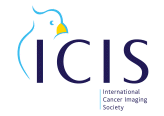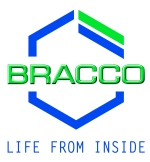Events / Education
International Cancer Imaging Society Meeting and 17th Annual Teaching Course
Mon 02 Oct 2017 Wed 04 Oct 2017 Society
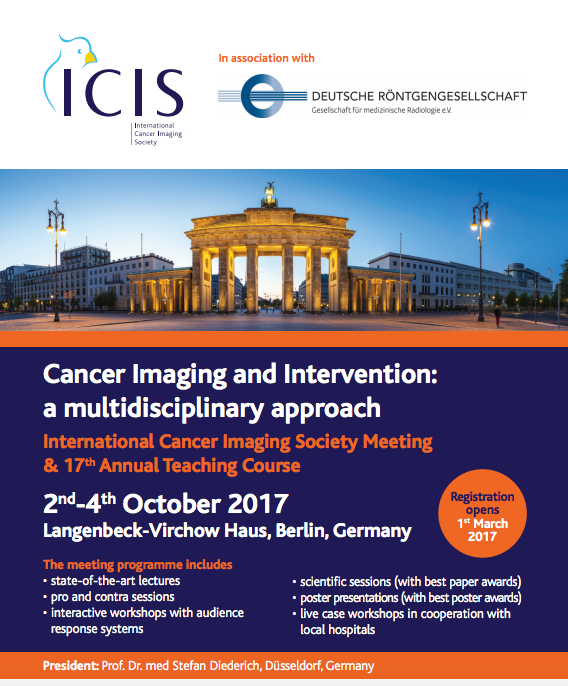
The 17th annual course of our Society will focus on practically orientated education of cancer imaging through interactive teaching and the fostering of active learning. State of the art and novel quantitative and functional imaging techniques will be highlighted.
The Society aims to bring together radiologists, nuclear medicine physicians and other specialists with an interest in oncological imaging for the exchange of ideas and to organise scientific meetings, multicentre research studies, and postgraduate courses within the field.
Keynote lectures highlight the challenges of precision medicine and the role of imaging in patients undergoing immunotherapy.
Individual learning is emphasised by small group sessions, interactive workshops and computer based hands-on workshops fostering active participation.
A unique feature this year are the live-case workshops in interventional oncology. Delegates will view oncologic interventional therapies such as transarterial chemoembolization (TACE), radioembolization (SIRT), percutaneous microwave ablation (MWA) and radiofrequency ablation (RFA) in small groups in Berlin hospitals on Wednesday 4th October. Transport from the conference venue will be provided. Early registration is highly recommended due to the limited number of places
A session entitled cases we would like to read again will present interesting oncologic cases reviewed with the benefit of hindsight.
There will be scientific sessions, dedicated to proffered papers, presenting research in the field of imaging in oncology. There will also be a poster exhibition and the best overall paper and poster will be awarded a prize.
This course is designed for all radiologists, radiation oncologists, medical oncologists and other specialists interested in the diagnosis and management of cancer patients.
The meeting will be held in the Langenbeck-Virchow Haus, Berlin Germany.
Berlin is one of Europe’s most vibrant capital cities, steeped in history and easily explored on foot or excellent public transport. It’s the perfect destination to spend a few days exploring in early autumn. From the Reichstag to the majestic Brandenburg gate, with myriad museums and a thriving art scene, as well as world class restaurants.
There will be a welcome drinks reception on Monday 2nd October, free to attend for all those who attend the first day of our meeting.
The course party will be held on Tuesday 3rd October on the barge “Alexander von Humboldt” taking us along many of the beautiful sights of Berlin during a delicious buffet dinner.
Learning objectives:
To improve your knowledge of:
- Cancer staging
- Response assessment
- Side effects / complications of oncologic therapies
- Interventional radiology in oncologic patients
- Structured reporting
- Imaging protocols in cancer imaging
- Differential diagnosis of focal lesions
Scientific Programme Planning Committee:
Stefan Diederich ICIS President (DE),
Bernhard Gebauer (DE),
Beth McCarville (US)
Dow-Mu Koh (UK),
Anwar Padhani (UK),
Andrea Rockall (UK),
Heinz-Peter Schlemmer (DE)
Harriet Thoeny (CH)
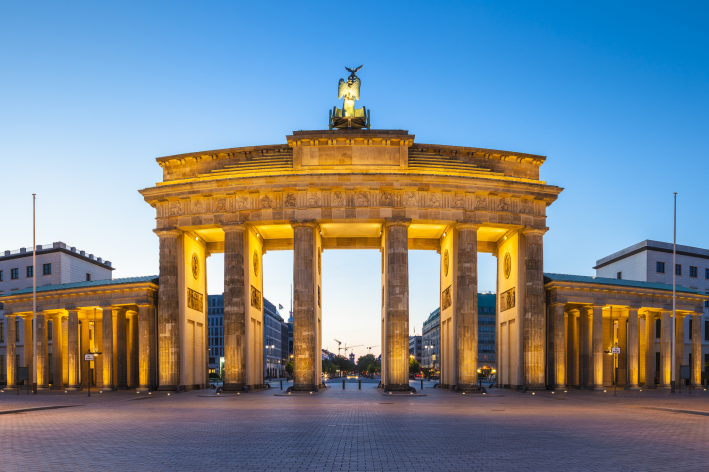
Course Highlights
2 Keynote lectures:
Cancer imaging in the era of precision medicine
Immunotherapy: imaging redefined
11 Main sessions:
Structured reporting and decision support
Precision medicine
Prostate: when to treat
Lung cancer update
Response assessment
Radiogenomics in female cancer
ICIS Gold Medal presentation
Liver: how to image
Side effects of medical therapy
How to diagnose focal liver lesions
Pancreatic tumours
Cases I would like to read again
14 Break-out sessions:
Head and neck
Delineation of tumour and normal tissue. In association with DEGRO
Interventions: percutaneous and intraoperative
Side effects of radiation therapy. In association with DEGRO
MR-guided radiation therapy. In association with ESTRO
Assessing therapy response. In association with DEGRO
Interventions: percutaneous
Interventions: vascular
Female pelvis
Malignant lymphoma
Metastatic disease
Paediatric tumours
Kidney and adrenal
Contrast-enhanced ultrasound
8 Computer hands-on workshops:
Multimodality imaging of the breast
Multiparametric imaging of the prostate
MRI of ovarian masses
Hepatic lesions
Pancreatic tumours
Lung cancer staging: 8th edition update
Uterine cancer
Whole body MRI
4 Live-case workshops
Transarterial chemoembolization (TACE) in HCC / liver metastases
Radioembolization (SIRT)
Microwave ablation of a pulmonary tumour in metastasis or small lung cancer
Radiofrequency ablation of liver metastasis
4 Scientific paper sessions and poster exhibition
Prizes for the best oral presentations and best posters will be awarded at the course party on Tuesday evening.
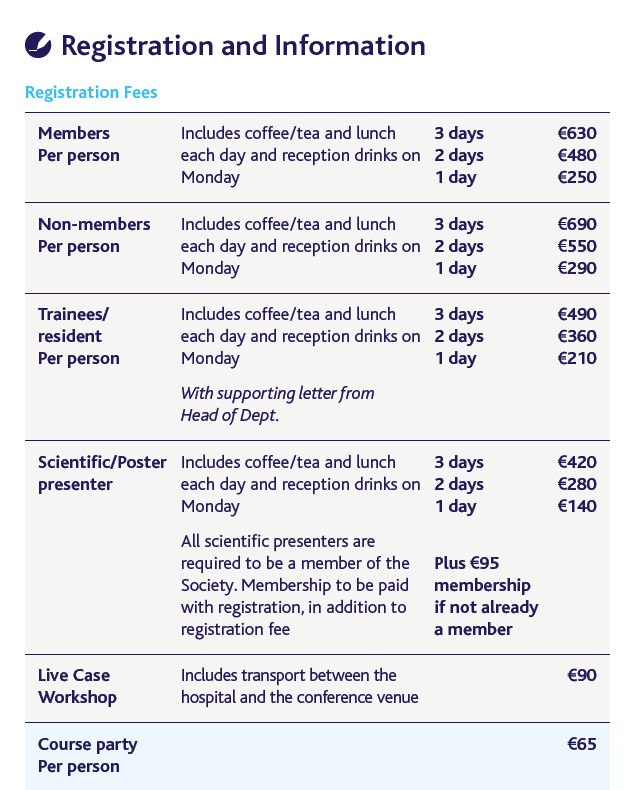
Socials
Welcome Reception
A complimentary Welcome Reception will take place on Monday, 2nd October in the historic foyer and gallery of Langenbeck Virchow Haus. The Reception will take place after the last lecture.
Course Party
We hope you will join us on Tuesday, 3rd October for a cruise on the barge “Alexander von Humbold” which will take as on the river Spree along many of the main attractions of Berlin while we enjoy a delicious buffet dinner.
Purchase your ticket while registering for the course on the ICIS website. Each ticket costs 65€ and includes a three course dinner, a glass of sparkling wine, a half a bottle of wine, teas and coffees as well as a live saxophone player and DJ. During the cruise we will award prizes to our best posters and presenters. We hope to see you there!
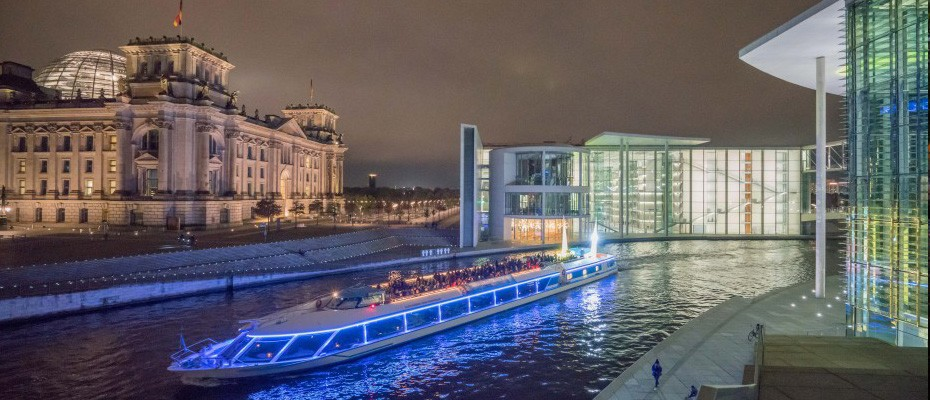
Register
At the top of this page there is a green 'Online Registration' button. Please click it and follow the instructions.
IMPORTANT INFORMATION
Reservations are subject to availability and will only be confirmed within one week of receipt of the fully completed registration form and full payment. A confirmation letter and further details will be issued on receipt of full payment.
Refunds (minus an administration charge of 80€) will only be made if written notification is received by 8th September 2017. Thereafter no refunds will be made.
Accommodation
Delegates are responsible for making their own arrangements for accommodation and should book via the given web link. We strongly recommend you book early to secure the best rates.
Please find a selection of hotels available to book:
https://www.wedgewood-registration.com/booking/icis2017/index.php?show=event&eventSub=Participation&e_access=WVdWck1qQXhOUT09KioqWVdWck1qQXhOUT09
Melia Hotel, Friedrichstraße 103, 10117 Berlin, Germany
T: +49 30 20 60 790 118
F: +49 30 20 60 790 444
M: +49 176 17666 535
Website: melia.com
Albrechtshof Hotel, Albrechtstraße 8, 10117 Berlin
129 € single incl. breakfast and VAT
159 € double incl. breakfast and VAT
Tel: +49 (30) 30 88 6-521
Email: [email protected]
Website: www.albrechtshof-hotels.com
Reference ICIS011017 for €129 single and €159 double
Rooms must be booked by 11th September.
Reference CANCERIMAGING300917 for €99 single and €119 double. Only 10 rooms available.
Allegra Hotel, Albrechtstraße 17, 10117 Berlin
109 € single incl. breakfast and VAT
139 € double incl. breakfast and VAT
Tel: +49 (30) 30 88 6-521
Email: [email protected]
Website: www.albrechtshof-hotels.com
Reference ICIS011017 for €109 single and €139 double
Rooms must be booked by 11th September.
By Air
Berlin is served by two airports - Tegel International (TXL) is the city's principal airport serving the major carriers, whilst Schönefeld (SXF) is the secondary airport serving low-cost airlines. Both airports are well linked to the city centre via bus or train. Please see the ICIS 2017 meeting pages on our website for more details.
By Train
Berlin is served by ICE, InterCity, and EuroCity trains, and by the national German train network Deutsche Bahn. Together they offer connections from other German and major European cities.
Visit Museum Island.
At the eastern end of Unter den Linden is Museum Island, a UNESCO-listed World Heritage Site lying in the middle of the Spree. Here you will find 5 of the best museums in Berlin.
Pergamon Museum
The Pergamon Museum was designed by Alfred Messel with three wings and welcomes about one million visitors a year, making it the most visited museum in Berlin. As part of the Master Plan for Museum Island, the Pergamon Museum is being gradually restored and a fourth wing will be added by 2025. As a result, the hall containing the massive Pergamon Altar will be closed until 2019. The Ishtar Gate, the Processional Way, the Market Gate of Miletus, and the Museum of Islamic Art are still open.
Bode Museum
The Bode Museum , built between 1887 and 1904 to plans by court architect Ernst Eberhard von Ihne, was recently refurbished. It houses an extensive collection of sculptures, treasures of the Museum of Byzantine Art, and the Numismatic Collection (coins). In summer, the opposite shore on the Spree is a popular meeting place for Berliners and visitors alike for the breath-taking views it offers of the northern tip of Museum Island.
Neues Museum
Friedrich August Stüler started building the Neues Museum in 1841. He used steam power and industrially produced beams to create an architectural sensation. The museum was severely damaged during the war and remained in ruins until 1999. The subsequent reconstruction and renovation was led by renowned architect David Chipperfield and lasted ten years. Since its reopening in 2009, the museum is home to selected objects from the Egyptian Museum, the Papyrus Collection, the Museum of Prehistory and Early History, and the Classical Antiquities Collection. The star attraction at the Neues Museum remains the bust of Nefertiti.
Alte Nationalgalerie
The Alte Nationalgalerie stands like a temple with its staircase. Indeed, architect Friedrich August Stüler modelled it on the Acropolis of Athens. Built between 1867 and 1876, the building now houses art from the nineteenth century (plus a decade or two) with works in the Classicist, Romantic, Biedermeier, Impressionist and early Modern styles.
Altes Museum
Karl Friedrich Schinkel designed this 1830 classicist structure the Altes Museum with rotunda, dome and portico as the first public museum in Prussia. After extensive renovations, the building now houses the city’s main collection of ancient art and sculptures and a gold treasury.
Visiting the museums on Museum Island can be seen as an archaeological journey of discovery, presenting the cultures of Europe and the Near East from antiquity to the recent past.
Walk the Berlin Wall
The Wall was mostly demolished between June and November 1990 although a restored stretch remains along the southern border of Wedding and Mitte. Visit Checkpoint Charlie, the famous east-west border control during the Cold War and now a tourist centre, for comprehensive display boards telling the Wall’s story. For more of a visual history, take a walk along the Wall by the Spree, where it runs between the Freidrichshain-Kreuzberg districts.
See the sights by bike
Central Berlin is well supplied with bike-rental outlets, and the city has a welcoming cycle culture, complete with cycle lanes and cyclist signs at the traffic lights. Start at the Reichstag and its adjacent complex of nineties Parliamentary buildings, then head across to the leafy paths of Tiergarten, up to Brandenburg Tor, the Holocaust Memorial, Potsdamer Platz, Checkpoint Charlie and end with the Topography of Terror – an outdoor museum on the site of the wartime SS and Gestapo offices.
Shopping in Berlin
On walking distance of Alexanderplatz you can visit Alexa. This indoor shopping centre possesses 180 different stores and is over 56.000 square meters large. >www.alexacentre.com
How to reach Alexa: It’s easiest to reach Alexa from station Alexanderplatz or Jannowitzbrucke. Both stations can be reached by S-bahn and U-bahn.
In the west of Berlin, in the bezirk> Charlottenburg, the famous and large street Kurfürstendamm can be found. This street has an impressive history but also offers many shops for tourists and habitants of Berlin. This area is mainly known because of the department stores KaDeWe and Peek and Cloppenburg. Besides that, you can find many delicious restaurants in the area around Kurfürstendamm.
How to reach Kurfürstendamm: You can travel to the KaDeWe (U-Bahn station Wittenbergplatz, U2 or U3) or travel with the U9 or U2 to station Zoologischer Garten.
Hackescher Markt is a fashionable large area with shops and restaurants just next to Station Hackescher Markt.
How to reach: Station Hackescher Markt can be easily reached with the S-bahn. The station is located just one stop from Alexanderplatz. If you prefer travelling with the U-bahn you can reach station Weinmeisterstrasse with the U8.
Guides to Berlin written by Locals
http://tripedia.info/location/europe/germany/berlin/
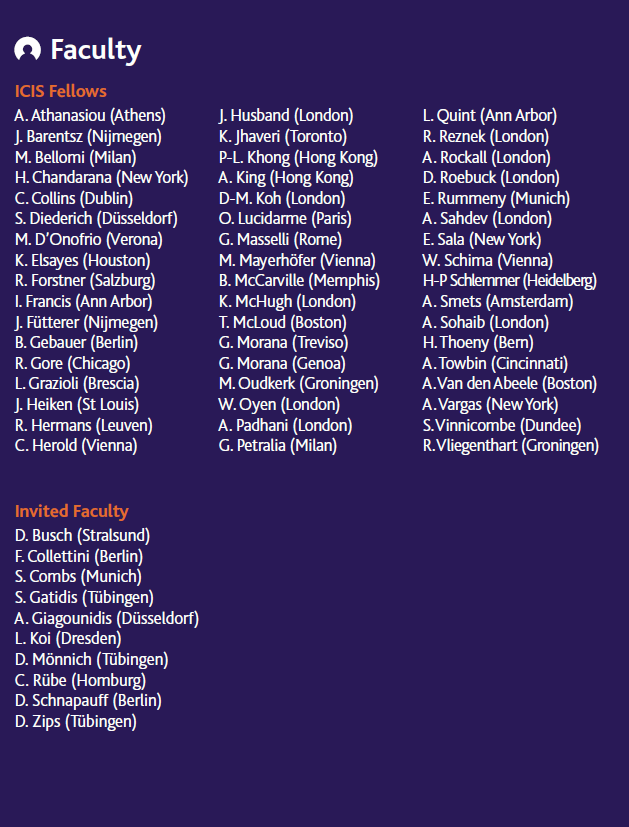
The Royal College of Radiologists (Category 1 (external) CPD credits)
Monday 2 October - 6 credits
Tuesday 3 October - 6 credits
Wednesday 4 October - 5 credits
European Accreditation Council for CME (EACCME)
(European CME credits (ECMEC))
Monday 2 October - 6 credits
Tuesday 3 October - 6 credits
Wednesday 4 October - 4 credits
German delegates will receive 16 category B points in total for the three-day course.
Monday 6 category B points, Tuesday 6 category B points, Wednesday 4 category B points.
Delegates attending a live case workshop will receive 3 category C points.
American delegates can have their EACCME European CME Credits converted to AMA PRA Category 1 Credit™ by applying to the AMA.
Download the 1 page form here:-
Send the completed form to the AMA together with the EACCME certificate* and the non-refundable processing fee (AMA members $30 and non AMA members $75). AMA certificates will be emailed within 3 business weeks.
* The EACCME certificate will be automatically emailed to you once you have completed the ICIS course daily electronic surveys.
Please visit this link for further information https://www.ama-assn.org/education/uemseaccme-cme-credit-recognition
You will be able to generate your own certificate of attendance once you have completed our daily online feedback form.
» Guidelines » Examples » Download Abstract Guidelines
General Rules
Abstracts that do not adhere to the following important points will be rejected:
The title should not exceed 15 words.
The abstract should not exceed 250 words.
Please use authors’ initials and surnames only.
Qualifications should be omitted. Do not include references, tables or figures.
Please do not use block capitals.
Please find examples at the bottom of the page.
You may choose among three different abstract types:
> Oral Scientific Presentation
> Poster Scientific Presentation
> Poster Educational Presentation
Oral Scientific Presentation
The abstract should be separated into “Aim”, “Methods”, “Results” and “Conclusion”. The abstract limit is 250 words. Abstracts should not include promissory notes such as “We will provide additional data during our presentation.” Authors of accepted oral presentations will be invited for a presentation within the Scientific Paper Sessions. Presentation time will be 8 minutes with 2 minutes for Q&A (depending on the final program).
Poster Scientific Presentation
The abstract should be separated into “Aim”, “Methods”, “Results” and “Conclusion”. The abstract limit is 250 words.
Poster Educational Presentation
The abstract should be separated into “Learning Objectives”, “Content Organisation”, and “Conclusion”. The abstract limit is 250 words.
Abstracts selected for presentation will be published in the Proceedings of the 17th International Cancer Imaging, given to all delegates and faculty. A downloadable version of your submission will be made available to our membership on the members only area of our website, and be available on the Cancer Imaging open access website. Authors of selected abstracts will be notified after Friday 30th June 2017.
It will be obligatory for all scientific presenters to be members of ICIS at the time of presentation in Glasgow. The annual membership fee of €95 will be added to the scientific presenters’ fee at registration if current membership is not in place. Membership will run for one year from date of registration; all standard member benefits will apply.
Queries may be addressed to the ICIS Secretariat
Tel: +44 (0)20 7036 8805 or Email: [email protected]
Submission deadline: Monday 29th May 2017
EXAMPLE - POSTER EDUCATIONAL
Chemotherapy Induced Cardiomyopathy: An Overview, Imaging Features, and Future Prospective
Authors: Divito D., Bondin M., Kirschner S. K., Stojanovska J., Ibrahim E., Frank L.
Learning objectives:
To review the spectrum of imaging findings of chemotherapy- induced cardiomyopathy in correlation with most common cytotoxic drugs and regimens.
Content organisation:
Cardio toxic effect of chemotherapy is a well-recognized problem in cancer patients. Cardio toxicity depends on multiple predisposing factors, specific components of the chemotherapy regimen, length of treatment, and dosage.
We will present the spectrum of most common cardiotoxic chemotherapy agents and their combinations, specific effects on the myocardium, and imaging features of cardiomyopathies induced by chemotherapy.
We will review pathophysiology of chemotherapy induced cardiomyopathy including:
- Dose dependent cardiomyopathy
- Predisposing conditions –diabetes, presence of coronary artery disease, age.
- Potential reversibility
We will discuss imaging characteristics of chemotherapy induced cardiomyopathy
- Imaging modalities ( Echocardiography, Cardiac MR, and MUGA)
- Importance of monitoring cardiac function during and after treatment
- Distribution of late Gadolinium enhancement (LGE)
- Emerging technologies for early diagnosis of cardiomyopathy in cancer patients
Conclusions:
Chemotherapy induced cardiomyopathy is a common problem among cancer patients, increasing long term morbidity and mortality and often leading to disability. Patients receiving chemotherapy treatment, particularly cardio toxic agents, should be routinely assessed for cardiac function to diagnose cardiomyopathy during the early phase of treatment and to prevent development of irreversible heart failure.
EXAMPLE POSTER SCIENTIFIC
The Value of 68Ga-PSMA Enhanced MR-PET in Patients with Biochemical Recurrent Prostate Cancer
Authors: E. Rummeny, K. Holzapel, T. Maurer, G. Weirich, E. Gschwend, M. Eiber
Aim: In patients with prostate Cancer increased levels of PSMA can be measured. Recently a new tracer, 68Ga-PSMA, was developed as a specific marker for hybrid imaging (PET/CT, MR-PET). In this study we evaluated the accuracy of 68Ga-PSMA in patients with rising PSA after radical prosatectomy, so called „biochemical recurrent prostate cancer“ (BRPC).
Materials and Methods: A total of 322 patients with BRPC underwent a MR-PET examination (Siemens Biograph mMR) after injection of about 150 mBq 68Ga-PSMA. Images were evaluated in cosensus by one experienced nuclear medicine physician and one radiologist. Pelvine lymphnode dissection was performed in most of the patients according to a predefined template with 8 fields. Lymphnode involvement was evaluated according to a 5 point scale with a patient- and a field-based analysis. These findings were startified according to PSA-values.
Results: Four patients were excluded from the study for different reasons. Sensitivity for detction of recurrence was 95.7 % for PSA-values ≥ 2ng/ml, 81.4 % for PSA-values of 1-2 ng/ml, 76% for PSA-values 0.5-1 ng/ml, and 51% for PSA values ≤ 0.5 ng/ml. In comparison to the MR-images alone MR-PET was of superior diagnostic value.
Conclusions: MR-PET using 68Ga-PSMA is a sensitive and highly accurate technique for the diagnosis of biochemical reccurence of prostate cancer after radical prostatectomy. It yields high diagnostic performance at relatively low PCA-values.
